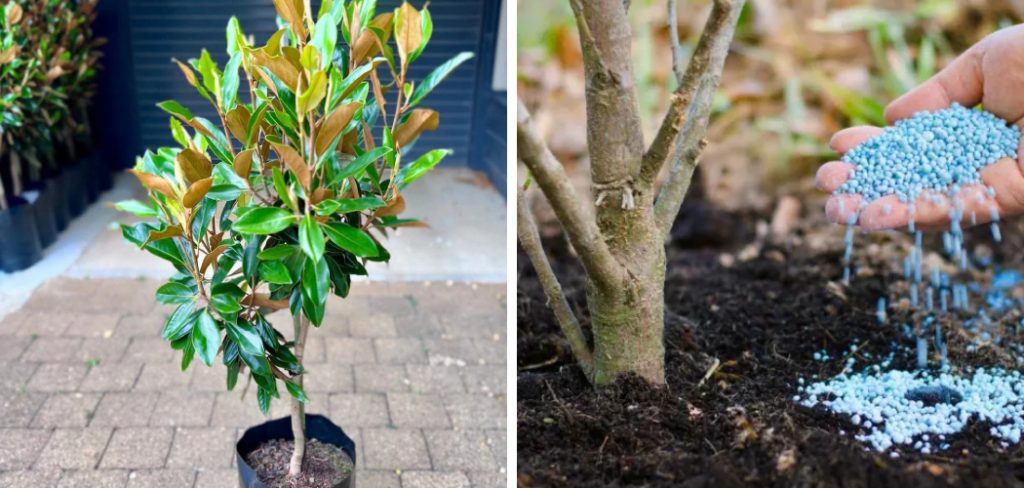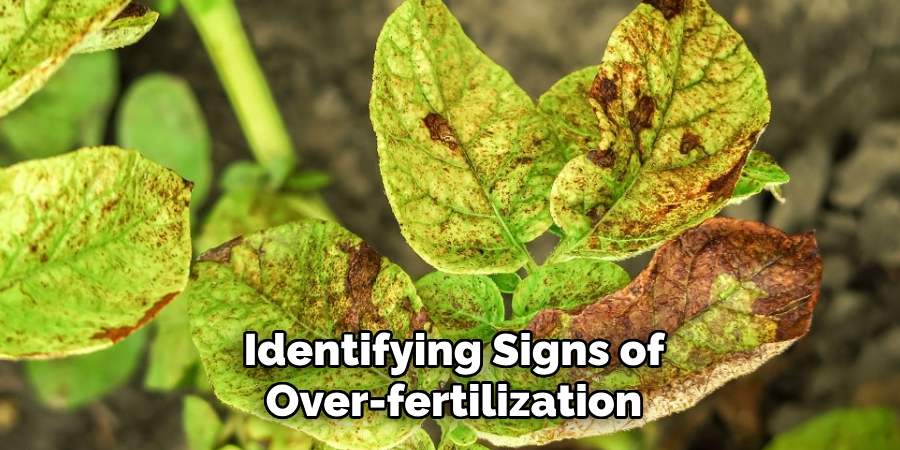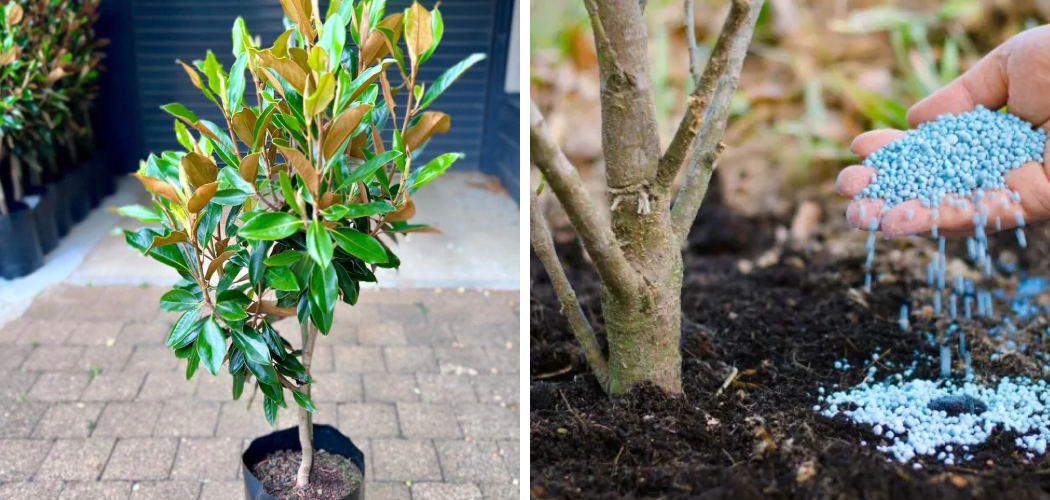To fertilize a magnolia tree, apply a balanced slow-release fertilizer in early spring. Magnolia trees benefit from regular fertilization with a balanced slow-release fertilizer in early spring.
This helps provide essential nutrients for healthy growth and vibrant blooms. Fertilizers with a ratio of 10-10-10 or 14-14-14 are typically recommended. Apply the fertilizer evenly around the drip line of the tree, avoiding contact with the trunk. Water the area thoroughly after application to ensure the fertilizer is absorbed into the soil.
Repeat this process once or twice a year, depending on the specific needs of your magnolia tree. Regular fertilization will help maintain the overall health and beauty of your magnolia tree.

How to Fertilize Magnolia Tree: Step by Step Guide
Getting Started With Magnolia Tree Fertilization
Proper fertilization is crucial for the health and growth of magnolia trees. Understanding the specific needs of these trees is important when it comes to ensuring their vitality. Magnolias require a balanced mix of nutrients, including nitrogen, phosphorus, and potassium.
It’s essential to provide them with the appropriate fertilizer at the right time. Over-fertilizing can lead to excessive vegetative growth and reduced flowering. Conversely, under-fertilizing can result in stunted growth and yellowing leaves. Before fertilizing, it’s recommended to conduct a soil test to determine the exact nutrient requirements of the tree.
Organic fertilizers, such as compost or well-decomposed manure, are often the best choice, as they release nutrients gradually. Applying fertilizer in early spring or late fall can boost the tree’s overall health and increase its resistance to diseases and pests.
With proper fertilization, your magnolia tree will thrive and provide years of beauty in your garden.
Choosing The Right Fertilizer
Choosing the right fertilizer for your magnolia tree begins with analyzing the soil composition. Understanding the npk ratio and its significance is crucial. Whether to use organic or synthetic fertilizers is another important decision to make. Organic fertilizers provide natural nutrients while synthetic ones offer a more controlled release.
Keep in mind that magnolia trees have specific nutrient requirements, so it’s important to choose a fertilizer that meets those needs. Analyzing the soil composition will help determine which nutrients the tree lacks and which fertilizer will address those deficiencies.
Remember to follow the instructions on the fertilizer packaging for application rates and timing. With the right choice, your magnolia tree will thrive and display its stunning blooms for years to come.
Seasons And Timing For Fertilization
Magnolia tree fertilization is crucial for its growth and overall health. Timing is key, as different seasons have specific requirements. Spring fertilization provides numerous benefits by boosting the tree’s vigor and promoting lush foliage. It is essential to assess the soil’s nutrient levels and ph before implementing any fertilization program, especially in preparation for the summer months.
Additionally, fall and winter fertilization considerations should be taken into account to ensure the tree is adequately nourished during dormant periods. By following these practices, you can effectively fertilize your magnolia tree and enjoy its beauty throughout the year. Remember to pay attention to timing and adjust the fertilization based on your tree’s specific needs for optimal results.
Applying Fertilizer Correctly
When fertilizing a magnolia tree, it is crucial to apply the fertilizer correctly. Preparation of the ground is the first step, ensuring it is free from any debris or weeds. Next, measure the appropriate amount of fertilizer and distribute it evenly around the base of the tree.
Avoid common mistakes such as over-fertilizing, as this can harm the tree. Take care to follow the instructions on the fertilizer packaging and water the tree thoroughly after application. By following these guidelines, you can ensure that your magnolia tree receives the right nutrients for healthy growth.
Remember, proper fertilization is essential for vibrant and blooming magnolia trees. So, take your time, be diligent, and enjoy the beautiful results.
Additional Fertilization Tips
Fertilizing a magnolia tree is essential for its health and growth. After fertilization, watering becomes crucial. Soil moisture can be maintained by mulching, which plays a significant role. Monitoring the dosage of fertilizer and adjusting it as needed is essential.
By following these tips, you can effectively fertilize a magnolia tree and ensure its well-being.
Troubleshooting Magnolia Tree Fertilization
Fertilizing a magnolia tree requires troubleshooting skills. An important aspect is identifying signs of over-fertilization, such as burned leaves and stunted growth. Nutrient deficiencies produce noticeable symptoms like yellowing or browning leaves. A thorough understanding of these signs helps in timely intervention and remediation.

Additionally, one needs to deal with pest and disease issues that can arise as a result of fertilization. It is crucial to address any issues promptly to ensure the health and vitality of the magnolia tree. Proper fertilization promotes growth and flowering, while avoiding common pitfalls helps to maintain the tree’s overall well-being.
With a careful approach to fertilization, your magnolia tree will thrive and enhance the beauty of your garden.
Frequently Asked Questions Of How To Fertilize Magnolia Tree
Q: When Is The Best Time To Fertilize A Magnolia Tree?
A: the best time to fertilize a magnolia tree is in early spring, before the new growth appears. This allows the tree to absorb the nutrients and use them to support healthy growth throughout the season.
Q: What Type Of Fertilizer Should I Use For A Magnolia Tree?
A: for a magnolia tree, it is best to use a slow-release, balanced fertilizer that is specifically formulated for trees and shrubs. Look for a fertilizer with a nitrogen-phosphorus-potassium (npk) ratio of around 10-10-10 or 12-6-4 to provide the necessary nutrients for optimal growth.
Q: How Often Should I Fertilize My Magnolia Tree?
A: magnolia trees typically benefit from annual fertilization. Apply fertilizer once a year in early spring, just before the new growth starts. Avoid over-fertilization, as this can lead to excessive leafy growth with reduced flower production.
Q: Can I Use Organic Fertilizer For My Magnolia Tree?
A: yes, organic fertilizers can be beneficial for magnolia trees. Look for organic options that are rich in nutrients, such as compost or well-rotted manure. These natural fertilizers will provide slow-release nutrients and improve the overall health of the tree.
Q: What Are The Signs Of Nutrient Deficiency In Magnolia Trees?
A: magnolia trees may exhibit signs of nutrient deficiency, such as yellowing leaves, stunted growth, and reduced flower production. If you notice these symptoms, it may be a sign that your tree needs fertilization to replenish the necessary nutrients for healthy growth.
Conclusion
Properly fertilizing a magnolia tree is essential for its overall health and growth. By understanding the specific needs of your magnolia tree and following the proper fertilization techniques, you can ensure that it thrives in your garden or landscape. Remember to choose a slow-release fertilizer that is formulated for acid-loving plants like magnolias.
Apply the fertilizer in the spring or fall, avoiding excessive amounts that could harm the tree. Prioritize organic fertilizers to promote long-term soil health and sustainable growth. Regularly monitor the health of your magnolia tree and adjust your fertilization routine as necessary.
By providing the right nutrients at the right time, you’ll be rewarded with beautiful blooms and healthy foliage on your magnolia tree for years to come. Happy gardening!

